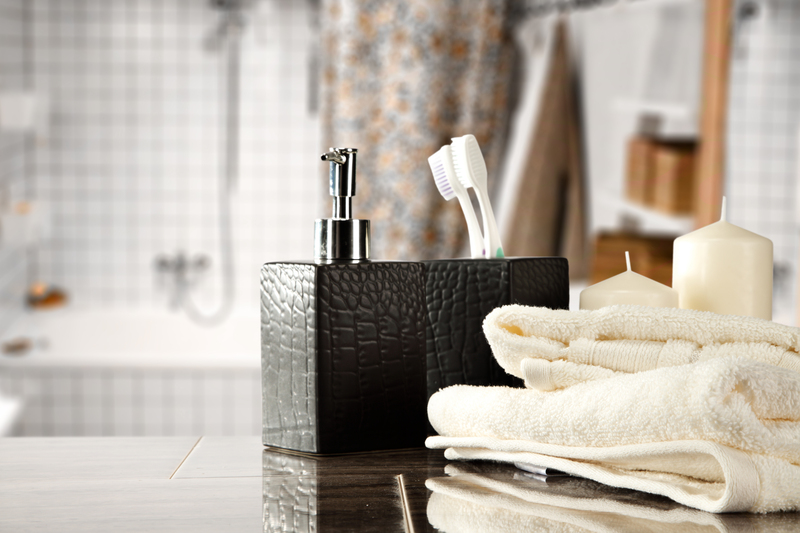How to Relocate Your Bed and Mattress Smoothly
Posted on 21/06/2025
How to Relocate Your Bed and Mattress Smoothly: The Complete Guide
Moving can be one of life's most stressful events, and relocating your bed and mattress is often one of the most daunting tasks. Whether you're moving across town or to a different city, ensuring your bed and mattress arrive undamaged and ready for use is critical for a smooth transition. This comprehensive article will walk you through every step required to relocate your bed and mattress smoothly, so you can enjoy a restful night's sleep in your new home from day one.
Why Proper Relocation Matters
Your bed and mattress are more than just furniture--they're essential components of daily comfort and well-being. Improper handling during a move can result in damaged bed frames, torn upholstery, or compromised mattress support. Careful planning and methodical execution will preserve these valuable items and stave off unnecessary expenses or discomfort after the move.

Preparing for a Smooth Bed and Mattress Move
1. Gather Packing Supplies and Tools
Before you begin, prepare the necessary supplies to protect your bed and mattress during the move. You will need:
- Mattress bag or plastic wrap - To keep your mattress clean and protected from moisture and dirt.
- Moving blankets - To wrap around the bed frame and headboard, preventing scratches and dings.
- Furniture straps or rope - To secure disassembled bed parts together.
- Appropriate tools - Such as a screwdriver, wrench, Allen keys, and pliers for bed disassembly.
- Labels and marker - For organizing screws, bolts, and small hardware pieces.
- Packing tape - For sealing protective covers and securing loose pieces.
Assembling these supplies in advance sets the stage for a more organized and efficient move.
2. Measure Your Bed, Mattress, and New Space
Measure your mattress, bed frame, and the doorways, stairwells, and elevators in both your current and new home. This will help you determine if your existing bed can be maneuvered through tight spaces and if disassembly is required.
- Record dimensions to avoid surprises during the moving day.
- Consider measuring the height and width of your new bedroom to optimize furniture placement.
Step-By-Step Guide: Relocating Your Bed and Mattress Effectively
Step 1: Strip and Clean Your Mattress and Bedding
Start by removing all bedding, pillows, and sheets from your mattress. Wash and pack them separately in clean, labeled bags. This helps preserve their freshness and makes unpacking in your new home easier.
- Vacuum your mattress to remove dust and allergens.
- Spot-clean stains with a mild upholstery cleaner. Allow to dry fully before packing.
Step 2: Disassemble the Bed Frame
- Remove the mattress and box spring carefully to expose the frame.
- Take pictures or videos of the assembled bed for easy reassembly.
- Unscrew headboards, footboards, and side rails with the correct tools.
- Keep all small hardware such as bolts, screws, and washers in a labeled plastic bag or container.
- Bundle the bed slats together and secure with furniture straps or rope.
Tip: Tape the hardware bag to one of the large bed components to prevent loss.
Step 3: Protect Mattress and Bed Components
Mattresses are vulnerable to dirt, moisture, and tearing during a move. To ensure a smooth and secure mattress relocation:
- Slip your mattress into a waterproof mattress bag or wrap it tightly in plastic sheeting, sealing all openings with packing tape.
- Wrap the bed frame, headboard, and other components in moving blankets. Secure blankets with tape or stretch wrap to prevent scratches and dents.
- Use extra padding for delicate or wooden bed frames to avoid unnecessary damage.
Step 4: Safely Transport the Mattress and Bed
When moving your mattress and bed to the moving vehicle, it's essential to handle each piece with care:
- Enlist help from one or more people to carry heavy or bulky pieces, avoiding injury and accidental drops.
- Carry the mattress on its side to navigate tight spaces more easily.
- Lift evenly to prevent bending or sagging, which can damage the mattress's inner support.
- If possible, use a hand truck or dolly for heavier frames.
Inside the moving truck, store the mattress upright against the wall and secure it so it doesn't shift during transport. Place heavy boxes and furniture away from the mattress to avoid compression damage.
Pro Tips for a Hassle-Free Bed and Mattress Move
Hiring Professional Movers vs. DIY: What to Consider
If your bed is especially large, fragile, or valuable, consider hiring professional movers with experience in bed and mattress relocation. They bring specialized tools, protective materials, and insurance coverage. However, if you're doing it yourself:
- Always plan the route (including stairs, hallways, elevators) from your bedroom to the truck and from the truck to the new bedroom.
- If moving solo, ask friends or family for a helping hand. Never attempt to move a large mattress or heavy bed frame alone.
Rent a Suitable Moving Vehicle
Choose the right truck or van size so that your mattress and bed components fit without cramming:
- Queen and king-size mattresses may require a large cargo van or box truck.
- If the vehicle is too small, you may have to bend or fold the mattress, risking permanent damage.
Special Care for Memory Foam or Specialty Mattresses
Memory foam, latex, and hybrid mattresses need gentle handling due to their flexibility and weight.
- Never bend or fold these types of mattresses as it may harm their internal structure.
- Always transport them flat or upright, secured to avoid slumping and misshaping.
Label Parts for Easy Reassembly
Label all parts, bolts, and slats--especially if your bed has many small pieces or unique hardware. This simple step will save hours during setup in your new home, reducing the stress of trying to figure out where everything fits.
Setting Up Your Bed and Mattress in Your New Home
After safely relocating your mattress and bed, follow these steps for efficient setup:
Inspect and Clean
- Remove all protective covers and inspect each item for damage or dirt.
- Dust the bed frame and vacuum the mattress before assembling.
Assemble in the Desired Location
- Layout all bed components and hardware where you plan to set up the bed.
- Refer to the photos or videos you took during disassembly as a guide.
- Reattach side rails, footboards, and headboards according to manufacturer's guidelines.
- Double-check that all screws and bolts are secure for stability.
Let the Mattress Air Out
Allow your mattress to breathe for several hours before putting any bedding on it. This helps eliminate any musty or plastic odors picked up during the move and lets the material return to its normal shape if slightly compressed.
Common Mistakes to Avoid When Moving Your Bed and Mattress
A smooth bed and mattress move depends on careful planning and avoiding these frequent pitfalls:
- Failing to measure doorways and corridors beforehand--leading to last-minute struggles.
- Not protecting the mattress with a proper cover--resulting in stains, tears, or infestations.
- Disassembling without documenting--causing confusion and delays during reassembly.
- Forgetting to keep all hardware together--resulting in missing bolts and unstable beds.
- Loading the mattress at the bottom of stacks--leading to compression and potential damage.
- Moving heavy items alone, which increases risk of injury and property damage.
How to Relocate Your Bed and Mattress Long Distance
If you're undertaking a long-distance move, further precautions are necessary:
- Ensure your moving company provides insurance that covers mattresses and beds.
- Protect against moisture and humidity with heavy-duty, waterproof covers.
- Store beds and mattresses flat rather than upright if storage is required en route.
- Label all items clearly, especially if they'll be in storage for a period of time.
- Inspect items promptly upon arrival, filing any damage claims immediately.

Frequently Asked Questions About Bed and Mattress Relocation
Can You Fold a Mattress to Move It?
Most traditional innerspring mattresses can handle brief, gentle bending, but memory foam and hybrid mattresses should never be folded as this can cause permanent interior damage. Always move these types flat or upright.
How Should I Move a Box Spring?
Wrap your box spring in a plastic or fabric cover to shield against dust and damage. Most box springs are lightweight but cumbersome; carry them on their side and secure well in the moving vehicle.
Is It Worth Moving an Old Mattress?
If your mattress is 7-10 years old or sagging, consider replacing it after the move. Moving presents an ideal time for an upgrade. However, if it's in good condition and comfortable, following the steps above will ensure it survives the journey.
Conclusion: Move Your Bed and Mattress the Right Way
Knowing how to relocate your bed and mattress smoothly is a valuable skill that will save you time, money, and stress. By planning, gathering the right supplies, methodically disassembling, protecting, and transporting each component with care, you will set yourself up for restful nights in your new home. Don't underestimate the importance of detailed preparation--it's the key to making moving your bed and mattress as effortless as possible.
Prioritize your comfort and your investment: use these expert tips on how to move your bed, transport your mattress, and reassemble your sleep haven--so you can enjoy a fresh start with peace of mind.





